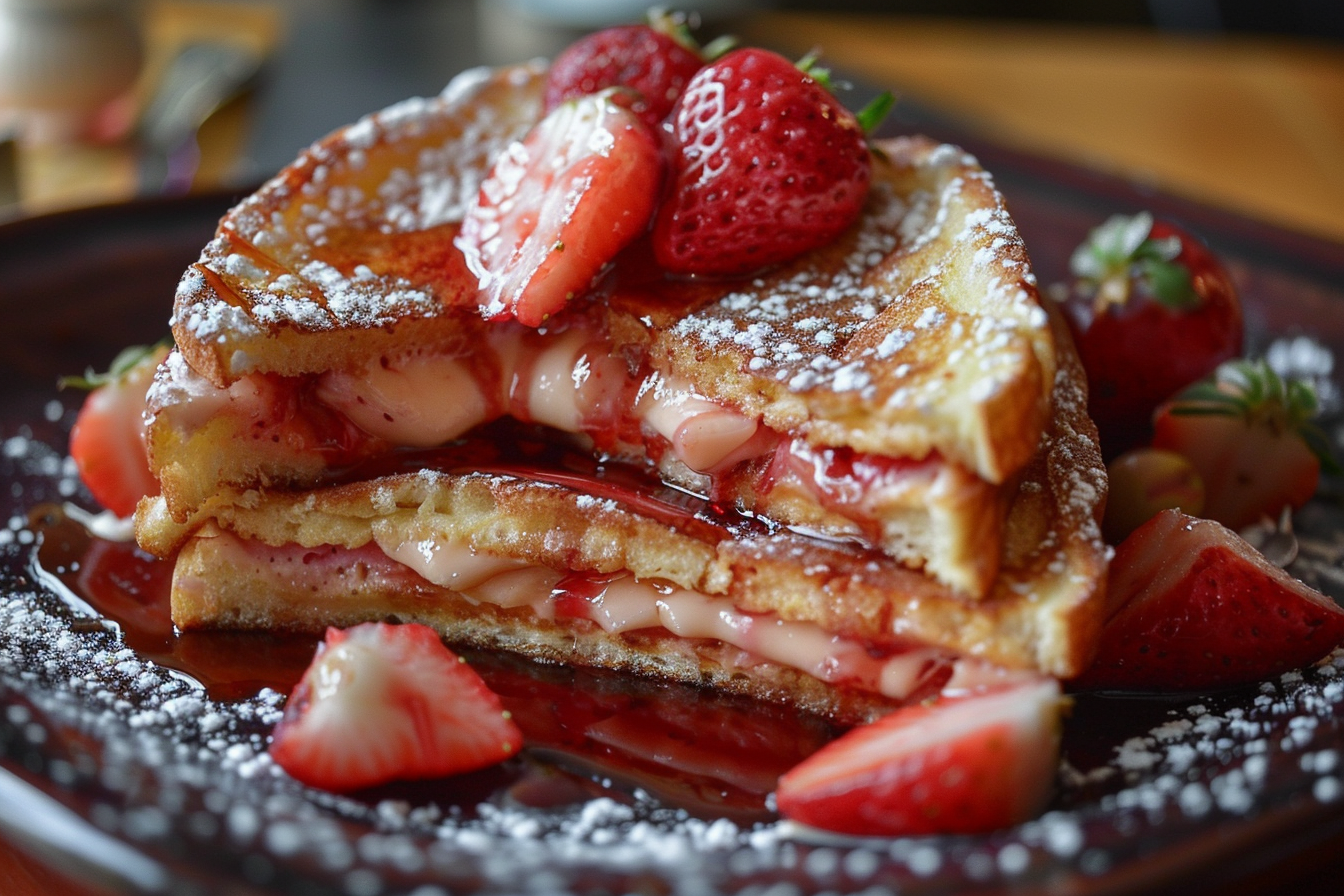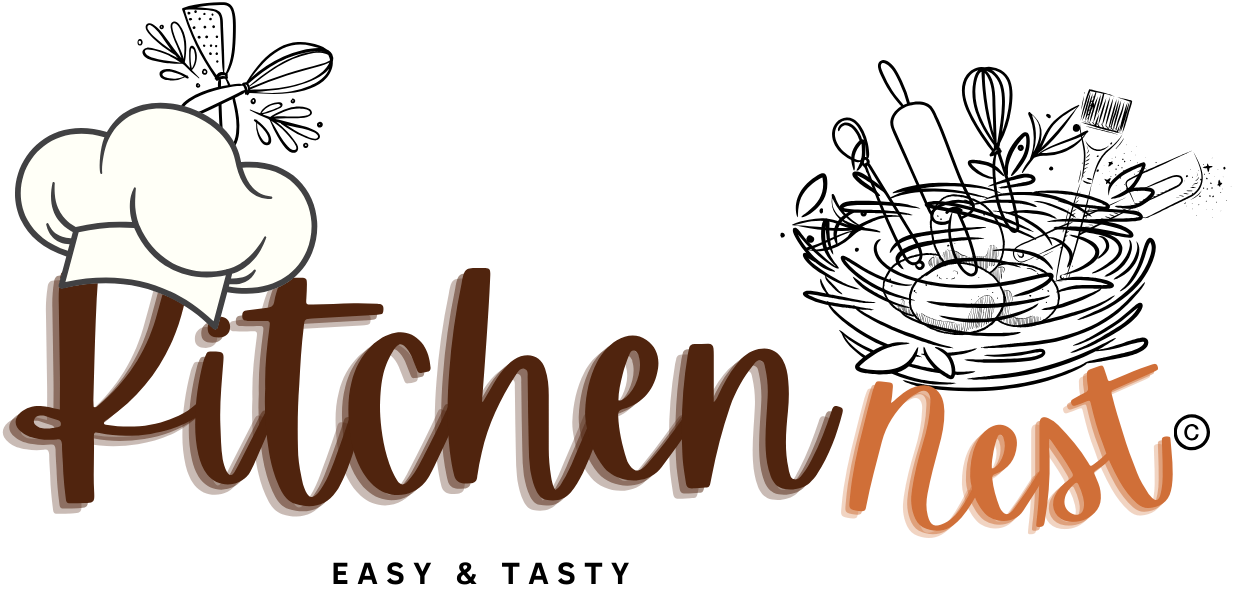Stuffed French Toast is a delightful and indulgent variation of the classic French toast, a beloved breakfast dish known for its sweet, custardy flavor. This decadent version involves slices of bread, typically thicker to accommodate the filling, which are soaked in a mixture of eggs and milk. Subsequently, they are stuffed with various fillings ranging from sweet cheeses like ricotta or cream cheese to fruit fillings like strawberries or blueberries. Finally, the stuffed slices are cooked to golden perfection on a griddle or skillet.
What is Stuffed French Toast?
Stuffed French toast elevates the traditional elements of French toast—a custard-soaked bread, cooked until golden—with the addition of fillings. Firstly, after dipping the bread in a rich custard mixture made from eggs, milk, and often a touch of vanilla or cinnamon, then the bread is filled with either sweet or savory ingredients. As a result, the outcome is a warm, creamy, and often fruity center encased in a soft yet crispy bread exterior.
Sweet and Savory Creations
The beauty of stuffed French toast lies in its adaptability. For instance, sweet fillings like cream cheese, used in our Philadelphia No-Bake Cheesecake Recipe, can be mixed with fruits for a luscious treat. On the other hand, savory options provide a hearty breakfast experience.
The Origin and Popularity of This Sweet Breakfast
Essential Ingredients for Stuffed French Toast
Stuffed French toast is not only a feast for the taste buds but also a creative canvas in the kitchen. Significantly, the choice of ingredients can greatly influence the texture and flavor of the final dish. To create a mouthwatering stuffed French toast, here are the key components you’ll need: This guidance ensures that each bite is as delightful as it is satisfying.
Bread Choices: Best Types for the Perfect Texture
The bread is the foundation of any French toast, and for stuffing purposes, it needs to be sturdy enough to hold fillings without falling apart. Thick-sliced breads work best. Here are some popular choices:
- Brioche: This rich, buttery bread is ideal for French toast due to its light texture and ability to absorb the custard mix without becoming too soggy.
- Challah: Similar to brioche, challah is a slightly sweet egg bread that is fluffy and absorbs flavors well.
- Texas Toast: Cut thick, this bread is less sweet than brioche or challah, making it a good canvas for both sweet and savory fillings.
- French Baguette: For a firmer texture, a day-old baguette can be sliced thick and used for a more substantial bite.
Fillings: Sweet and Savory Options
The fillings for stuffed French toast can range from the classic to the innovative, allowing for a variety of flavors. Here are some popular filling ideas:
- Sweet Fillings:
- Cream cheese mixed with powdered sugar and vanilla
- Mascarpone and fresh berries
- Sautéed apples with cinnamon and nutmeg
- Chocolate chips and banana slices
- Savory Fillings:
- Spinach, feta, and sun-dried tomatoes
- Sautéed mushrooms and Swiss cheese
- Ham and cheddar cheese
- Bacon and scrambled eggs
Custard Mix: Key Components for the Rich, Eggy Soak
The custard mix is crucial for creating the moist, tender interior of French toast. A basic custard mix includes:
- Eggs: The main component of the custard, providing richness and structure.
- Milk or Cream: Use full-fat milk or a combination of milk and cream for richness.
- Sugar: Adds sweetness to the custard; adjust according to the sweetness of your fillings and toppings.
- Vanilla Extract: Provides a warm, aromatic flavor.
- Cinnamon: Optional but recommended for a hint of spice.
The custard mix is crucial for creating the moist, tender interior of French toast, including eggs for richness and structure, and full-fat milk or cream for creaminess. Moreover, sugar adds sweetness, while vanilla extract provides a warm, aromatic flavor, and a dash of cinnamon offers a subtle spice. Subsequently, these ingredients are whisked together until smooth and then used to soak the bread slices before cooking. Particularly for those seeking a healthier alternative, low-fat or skim milk can adjust the richness to better suit dietary preferences. Learn more about the benefits and differences of whole vs. skim milk here. Ultimately, this meticulous combination results in a deliciously rich and flavorful breakfast, perfect for special occasions or leisurely mornings.



